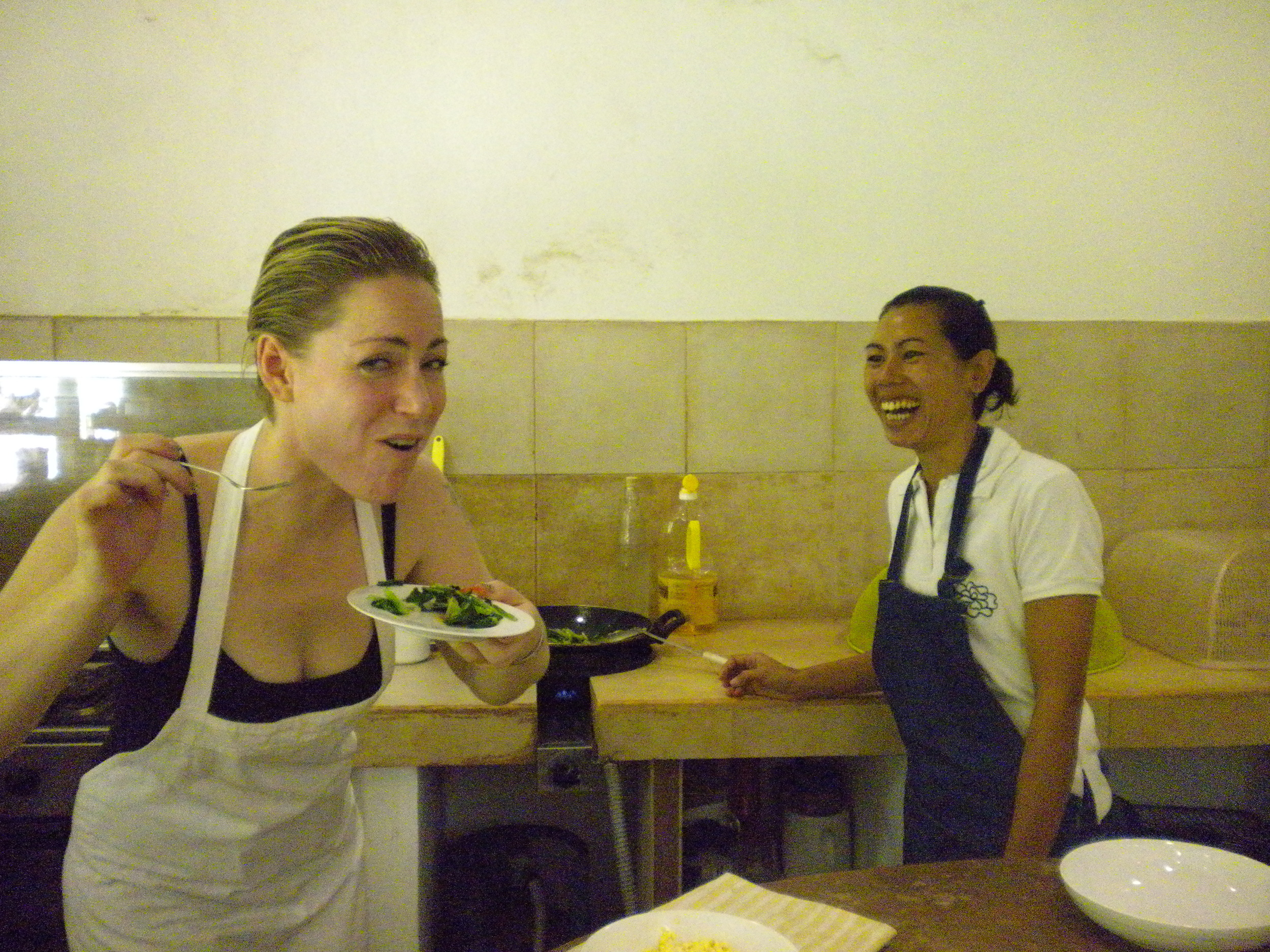At Jiwa Damai we serve health-conscious cuisine for body and soul. We only use local fresh farm products, some grown on our land. In combining our ingredients, we pay attention to how the valuable substances in the food complement each other in order to create a balanced and vitalizing eating experience.
Our talented cook Astri likes to prepare various Tofu dishes. This one is sooo yammi....
Recipe for Kare Tofu:
- 2 pieces of lemongrass, pounded with mortar & pestle
- 1 package firm tofu
- Approx. 4 leaves Daun Salam, an Indonesian Bay-Leaf. If you cannot attain Daun Salam you can substitute with ordinary bay-leaves, though the taste will be different.
- 4 pieces of Kemirie Nuts. This Indonesian nut looks like a large hazelnut. Astri uses it to thicken and flavor the Kare Tofu sauce. You can substitute with Macadamia or Brazil nuts.
- 2 red onion
- 4 cloves garlic
- 1 small piece fresh turmeric (peeled an ground)
- A pinch of Ketumbar, or coriander spice.
- 1 teaspoon sugar
- ½ block veggie stock
- 1 package of Santan Kelapa (65 ml) or Coconut milk, specifically the extract from the grated coconut flesh
- 1 cup water
Preparation:
First, make the sauce. Add the Kemirie, chopped garlic, minced red onion, turmeric, Ketumbar and sugar together in blender (a bullet is useful here).
Cut tofu into triangles. Heat a couple tablespoons of vegetable oil in the wok enough to coat the pan and give partially cover tofu. Once hot, add tofu. Give the lemongrass a couple of pounds with mortar and pestle and then add the entire stalk into the skillet. Add Daun Salam. Let simmer for 5 to 10 minutes. Add sauce and stir. Next, add water. The mixture should look almost soupy. Add vegetable sock. Bring the tofu and sauce to a boil for about 15 minutes. Reduce heat, allow to continue cooking and reducing for 2 or 3 minutes. Take off heat and add Santan Kelapa. Stir and let stand. Give sauce adequate time to cool and thicken around the tofu.
Serve warm, with rice.






















